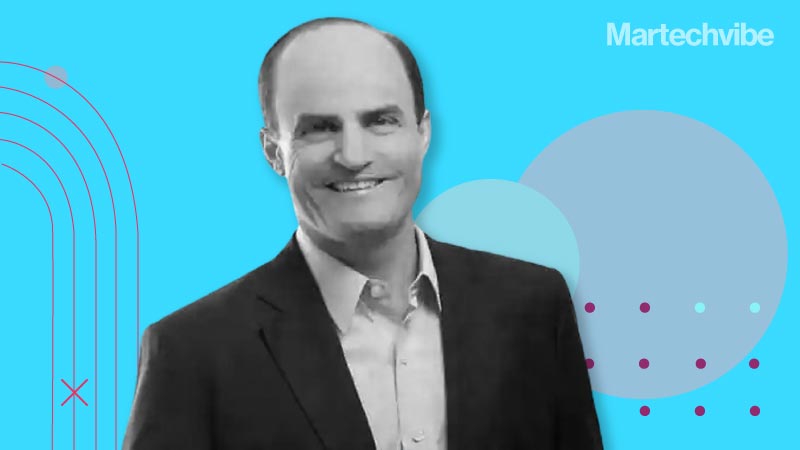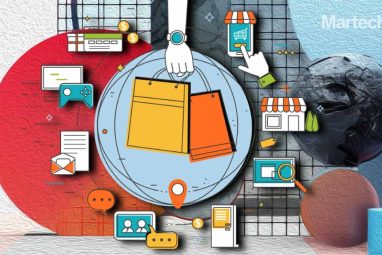Authentic Service is About Creating Value
Ron Kaufman is a global service consultant, speaker and educator who specialises in building uplifting service cultures with company leaders. Through his consultancy Uplifting Service, he has worked with brands like Coca Cola, HP, Microsoft and many more. In addition, he has written over 15 books, of which the latest one, UPLIFTING SERVICE: The Proven […]

Ron Kaufman is a global service consultant, speaker and educator who specialises in building uplifting service cultures with company leaders. Through his consultancy Uplifting Service, he has worked with brands like Coca Cola, HP, Microsoft and many more. In addition, he has written over 15 books, of which the latest one, UPLIFTING SERVICE: The Proven Path to Delighting Your Customers, Colleagues and Everyone Else You Meet, made it to the New York Times bestseller list. In conversation with Ravi Raman, Publisher of Martechvibe, Ron speaks about the evolving definition of service, how brands need to be cognisant of customers across diverse cultures and using technology to personalise service impact every individual.
Excerpts from the interview.
Are customers placing customer service over other brand facets?
Customers today are looking for an offering that contributes to their well-being. They are looking for something that they assess to be of value to them. It could have quantitative value, measurable or financial value. It could contribute to emotional, belonging or enjoyment value. It could even add relational, existential or life purpose value. The general way people look at this phrase ‘customer service’ is as a carryover from an era that’s passed. An era where we had a product, feature, or price benefits, and service was simply the soft stuff wrapped around it.
But I define service as the action that creates value for someone else. So, the product designer is a service person, a manufacturer is a service person, the people in the warehouse are doing a service-related job, marketing, sales, and the following support for customers is also service. When you think about what customers want, are you talking about just the soft part? No, they want the whole package.
They want action that creates value for them. What makes it valuable? The fact that it contributes to their well-being. That’s the landscape in which companies and brands are competing today.
Customer expectations are constantly changing. How can marketers and brands keep up?
The key is to recognise that the history of branding itself evolved as part of the whole marketing dialogue. The brand became a way of differentiating from the competition, standing out from the crowd in a market where the product might be highly commoditised. Imagine something like laundry detergent. The concept of branding allowed a particular laundry detergent to be seen as something that stands out on the grocery store shelf or in consumers’ hearts and minds, and homes.
We see today in every industry, B2B and B2C that there are so many available options for customers. There are new entrants that are constantly launching, and there is a convergence of fields. The whole digital play and online space have erupted. So brands, or rather branding people, need to think differently.
Rather than brand myself in a way that differentiates me from the competition, how can I brand myself in a way that creates intimacy with the customer? Brands need to make themselves a part of the customer’s life, not just now but into the future. That’s the challenge for brands today.
Also Read: Can Privacy And Data-Driven Marketing Co-Exist?
The customer service concept — is it a cultural, strategic or technological issue?
Human beings live in all sorts of historical and social cultures. Some are quite formal and reserved, some are wild and crazy, some are deeply traditional, while others are very frothy and change daily. We must ask ourselves, where does a brand locate itself? Is it a cultural issue? Of course, it is. But what makes it a cultural issue? It is the culture of the customer base that does so.
Brands need to find a way to be relevant in that particular culture. They need to create fresh, reliable, relational value. Brands can’t simply close the deal on a sale and move on. They need to become increasingly part of the customer’s lives. These lives are located within diverse cultures of the world. That’s one of the big challenges for brands today. You can seek to elevate all customers from many diverse cultures to all want and appreciate a particular brand, let’s say YouTube. But YouTube knows where you are dialling in from and what your prior viewing experience has been. They are going to customise the brand experience of YouTube for you in your culture.
How does technology relate to that? Technology is an enormous enabler. It’s what allows us to inform personalisation and adaptation for unique customers, to the point of individual customers. That’s a massive challenge for anyone who is not a digital native. Older people in the industry who brought with us not only a different skillset but also a different mindset needs to evolve to fully embrace the technology that is available to us today.
Give us an example of an ideal customer experience.
I’m going to use an industry largely associated with service, but I don’t want to say that that’s the only place service is located. Service is in every position and every industry all over the world. I’m going to use an example of a hospitality firm because all of us like to go on vacation, and at this time, we all might need one.
There is a hospitality investor group based in Mauritius called Naiade that I worked with. They had nine resorts spread over several countries. During the global financial crisis, they came close to bankruptcy. They had 3,200 employees, but they didn’t have the money to come out of bankruptcy. The only way they were going to make it was to differentiate from the competition, but they couldn’t do it by hiring new resources because they didn’t have the funds. So, they realised that they would have to differentiate themselves through service.
They would have to inspire, educate, empower, enable and engage their full-time staff, tour operators and partners to be a part of a new phenomenon that raised the bar of service to a new level that was even higher than the six levels that I’ve created.
We invented a new brand called LUX* now known as the LUX* Collective and developed a seventh level of customer service called ‘shining’. Then, they doubled down and tripled down on the education of their staff, the inspiration for their staff and the ideas that came from their staff. For example, you make a reservation at this hotel in Mauritius. Let’s say you are based in Europe. On this vacation, it’s you, your spouse and your two kids. You’ve been looking forward to this vacation, and you’re going for about eight to nine nights. Your time is incredibly precious. What usually happens when a family gets to a resort is they spend the first two days looking around. Guests will familiarise themselves and then settle down. Before you know it, the vacation is over.
At LUX*, they would reach out to guests as soon as the reservation was made to find out who is coming, what they are looking for. They would ask the guests about their lives, about their kids. So, by the time the guests arrive, they know that they are receiving a family that includes an exhausted executive, a spouse that is really looking forward to some intimate couple time together, a young teenage kid and a toddler. With these prior interviews, the hotel is able to create an experience that offers higher value. As soon as the family arrives to check-in, the hotel staff there to greet them includes someone from the spa, someone from the rooms division, the chef and a member from sports. What is going on?
The person from sports is looking around for the 13-year-old. He says, ‘hey, we’re starting a sand volleyball tournament, and we’re missing a player’. He asks the kid, can you play? And the 13-year-old is up and away. Then you’ve got the chef with the tall hat. He goes up to the toddler and says, we’re going to make pizza soon. ‘Would you like to come over to the kitchen and learn how to make pizza?’ Then, the person from the rooms division looks at the couple and says, ‘let me get you in the buggy and get you settled in because we’re got you booked for a couple’s massage that starts in about 60 minutes. Welcome to the resort!’
It’s a completely different service experience because they have got a hospitality brand where every member of the staff knows that they can make each moment matter. And they care about what matters. Matters to whom? Each person who comes to the resort.
Also Read: The Impact of Predictive Analytics on Customer Experience
Is a service culture driven by leadership?
How is caring for the customer different from serving the customer? These are two abstractions that are very closely related, but they are not the same thing. Service is taking action to create value for someone else. That was the definition that I built on and served customers worldwide with for about 25 years. Then, I realised that my definition needed to be updated. Now, I’ve rewritten a new definition that explains that authentic service is about creating value for someone you really care about. Not all service comes from caring. For example, if you sell cigarettes, you may create value for your customers, but I’m not sure that you truly care about their future well-being.
So, what is care? Care is showing concern. But in a working world, it’s more than that, it’s showing concern with the commitment to the well-being of your customer. The ‘being’ in well-being has action, it’s a continuous process. It includes the future well-being of your customer as well. How do you do that? You take action. What’s the action called? Service.
You should want to build an entire company culture based on this. If you want to build a brand that’s known for delivering a superior level of service, you need people at the top who understand it, believe in it and are willing to invest in it. They need to be able to commit to enabling it with and for their team. It’s also important for the team to feel that the leadership is concerned and committed to their future well-being.
Recommend two books that marketers ought to read.
You’re probably expecting me to mention books in the space of customer experience, customer service and customer loyalty, customer journeys, but I won’t.
Here are two of the finest books I’ve read over several years, and I read about a book a week. The Invention of Yesterday: A 50,000-Year History of Human Culture, Conflict, and Connection by Tamim Ansary. What this incredible writer has done is that he’s written a history of the world that shows how cultural narratives evolved. These cultures and civilisations came up against one another, and the author invented the term bleshing (blending and meshing) of cultures. Earlier, we spoke about how every customer was raised in certain cultures, lived in certain cultures, assessed value out of the background of tradition of certain cultures. If you are a marketer, this book will provide a historical background to deliver better service that is cognisant of culture.
The second book looks the other way. The Ministry for the Future by Kim Stanley Robinson. This is a work of science fiction that is based in the immediate future. It assumes that the Paris agreement occurred, yet the implementation of that didn’t manifest for a few years. At some point, the world woke up and created an international ministry for the future. I think we’re waking up right now. I want marketers to read this because it narrates the changing social space and what human beings care about and value. It helps us understand the conversations that are emerging, not just out of the past but into the future.






